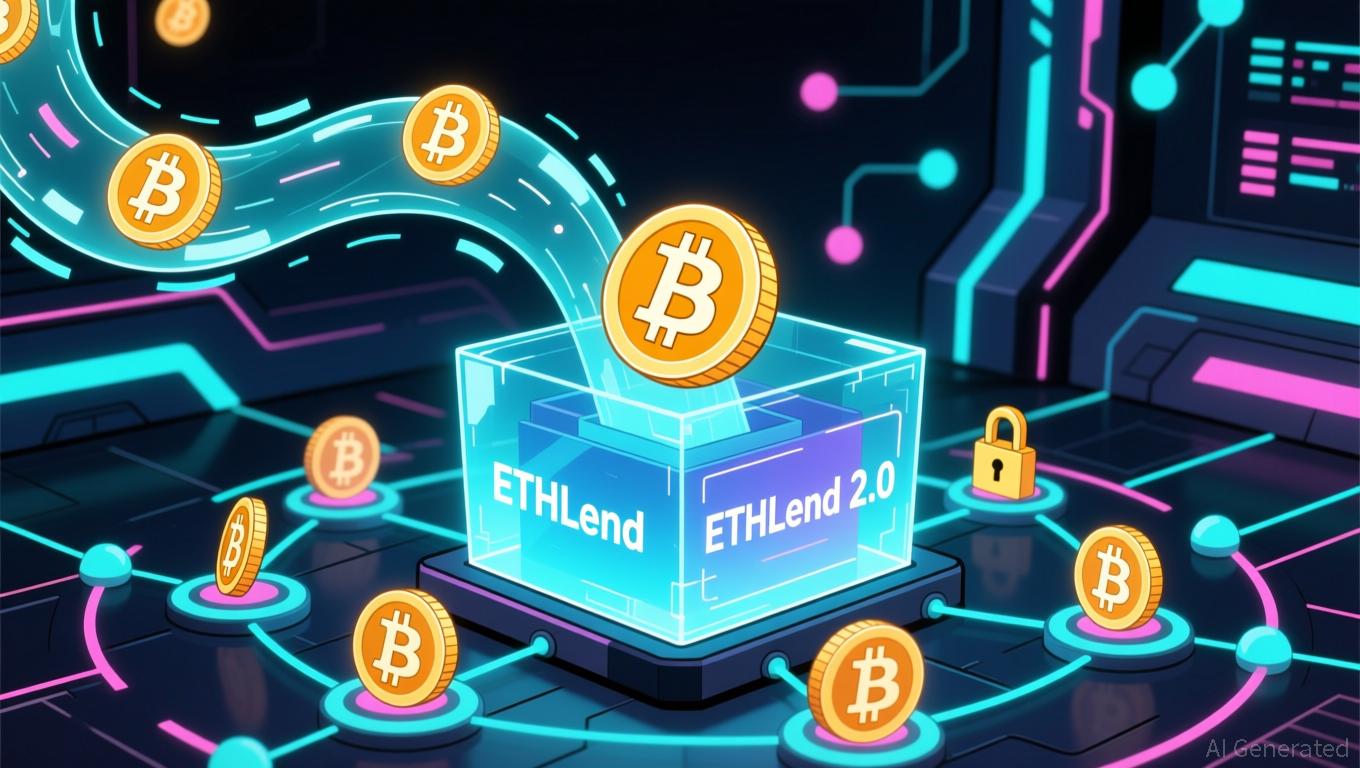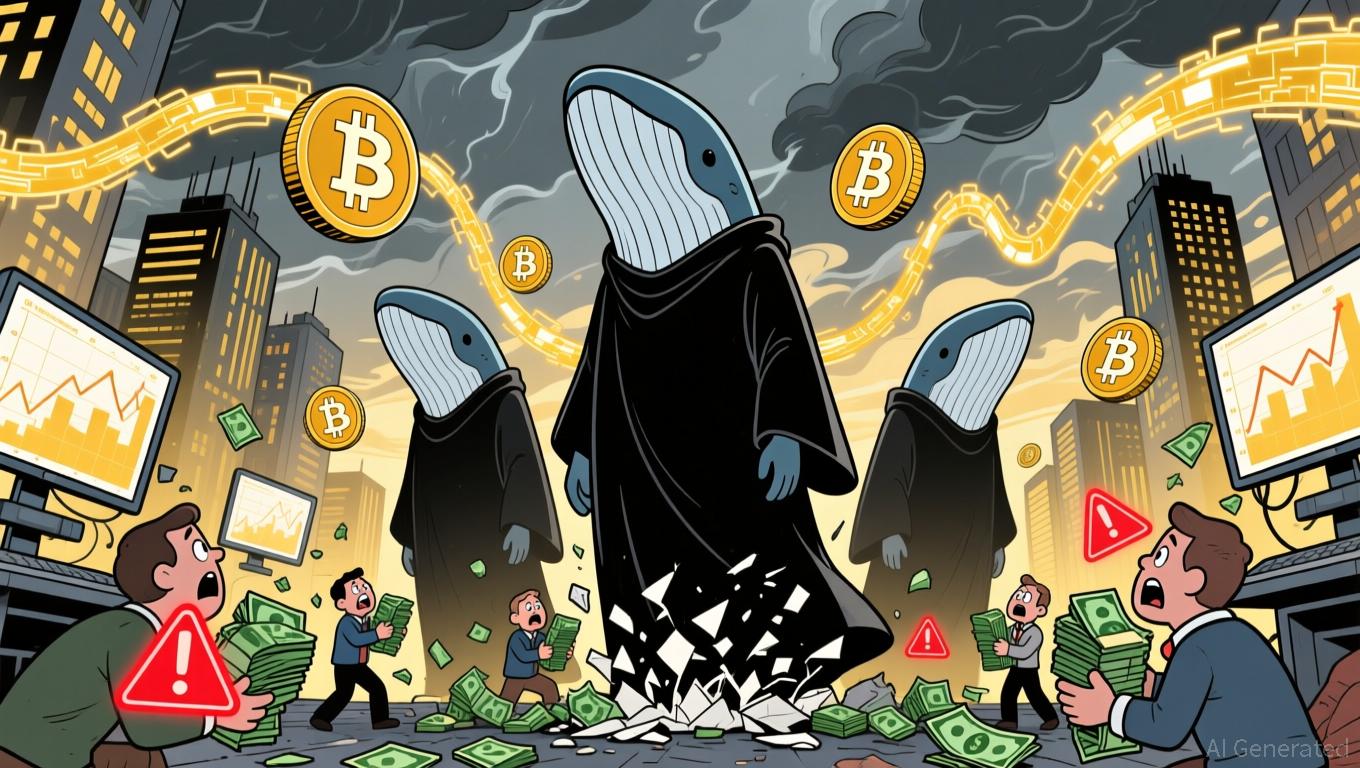Bitcoin News Update: Aave's ETHLend 2.0 Disrupts DeFi's Dependence on Wrapped Tokens by Introducing Native Bitcoin
- Aave founder Stani Kulechov announced ETHLend 2.0's 2026 relaunch using native Bitcoin as collateral, diverging from wrapped tokens. - The hybrid P2P-liquidity pool model aims to enhance DeFi efficiency while reducing synthetic asset reliance through cross-chain BTC integration. - This revival aligns with growing institutional demand for non-wrapped BTC and could restore utility for the legacy LEND token. - Despite bearish market conditions, the move signals confidence in Bitcoin's foundational role for
Stani Kulechov, the founder of Aave, has announced that ETHLend—the project’s original peer-to-peer lending platform—will be revived in 2026 with a major update:

ETHLend, which became known as
The DeFi sector has responded with both nostalgia and intrigue. Old screenshots of ETHLend’s 2018 interface have resurfaced on social media, showcasing the project’s journey from a small-scale P2P initiative to a major DeFi ecosystem.
Although the focus is on ETHLend’s return, the overall crypto market remains in a downturn.
This revival highlights Aave’s intention to move beyond just liquidity pools and broaden its product lineup. While it’s still uncertain whether ETHLend 2.0 will be a standalone platform or integrated with Aave, the renewed focus on P2P lending suggests it will complement Aave’s current offerings. This could appeal to users who prefer direct counterparty relationships, a need not fully met by automated market makers.
As DeFi continues to develop, bringing back ETHLend with native Bitcoin support puts Aave in a strong position to attract both long-time users and new institutional participants. With 2026 approaching, the industry will be watching closely to see how this hybrid approach balances fresh innovation with the efficiency that made Aave a leader in the space.
Disclaimer: The content of this article solely reflects the author's opinion and does not represent the platform in any capacity. This article is not intended to serve as a reference for making investment decisions.
You may also like
Bitcoin News Today: Bitcoin Drops to $80k—Is This a Sign of Market Recovery or the Start of a Steeper Decline?
- Bitcoin fell to $80,500 in November 2025, sparking debate over market bottom signals amid mixed technical indicators and whale resilience. - On-chain data shows miners and long-term holders avoid selling, while retail sell-offs and Fed policy uncertainty complicate recovery prospects. - Geopolitical tensions and crypto-linked sanctions evasion amplify volatility, contrasting with institutional participation via leveraged ETFs and transparency tools. - Analysts remain divided: some highlight historical pa

The Rapid Rise of ZK Tech Stocks: Could This Signal the Dawn of a New Era?
- ZK technology stocks surged amid institutional adoption and quantum threat concerns, despite no recent regulatory updates or protocol announcements. - Institutional demand for privacy-preserving infrastructure grew, highlighted by Coinbase's security-focused wallet migration and post-quantum readiness discussions. - Market momentum reflects anticipation of future ZK protocol upgrades and cross-sector innovation, though regulatory ambiguity creates both risks and opportunities. - Analysts debate whether t
Astar 2.0: The Next Generation of DeFi Infrastructure
- Astar 2.0, a next-gen DeFi platform, leverages hybrid AMM-CEX models and AI-driven tools to enhance cross-chain liquidity and smart contract security. - The platform achieved $1.399B TVL and $27.7B daily volume in Q3 2025, with strategic partnerships and integrations across BNB Chain, Ethereum , and Solana . - AI-enhanced auditing modules and EVM compatibility address 89% of DeFi contract vulnerabilities, driving 20% QoQ growth in institutional wallet adoption. - Tokenomics 3.0 caps ASTR supply at 10.5B
Vitalik Buterin Backs ZKsync: Accelerating Ethereum’s Expansion and Advancing Layer 2 Solutions
- Vitalik Buterin endorses ZKsync's Atlas upgrade, highlighting 15,000 TPS, $0.01 fees, and bridging Ethereum's Layer 1/2 liquidity. - ZK Stack innovation reduces capital fragmentation while Airbender prover enables 2-GPU L1 block proofs, advancing Ethereum's scalability. - ZKsync now holds 15% Layer 2 TVL with 50% ZK token surge, but faces 60x performance gaps and competition from Arbitrum/Optimism. - Upcoming Fusaka upgrade targets 30,000 TPS by December 2025, while Kohaku privacy framework addresses ado